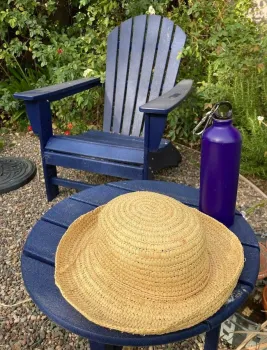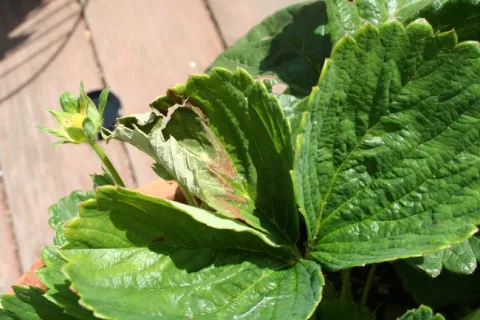
First, take care of yourself.
Especially when there is an excessive heat warning, plan any outside chores for the morning, when the temperatures are cooler.
Follow these other steps to prevent heat illness:
- Drink plenty of fluids, such as water and sports drinks. During hot weather, plan to have at least one quart of water available per person per hour of the outdoor activity. Avoid caffeinated drinks.
- Limit your time outdoors.
- Work in the shade when possible.
- Wear a summer hat with a brim and loose-fitting, light-colored, and lightweight clothing like cotton.
- Wear sunscreen (follow this tip whenever you're out in the sun).
- Schedule vigorous activities during the coolest portions of the day and take frequent breaks on hot days.
- If you are feeling symptoms of heat illness, take a rest period in a shaded area. Monitor others around you for symptoms as well.
- Do not overdo! Your weeds will still be there when it cools down a bit.
Next, take care of your plants.
During heat waves, our number-one gardening goal is to keep our plants alive. Plants are sensitive to soil temperature and air temperature, and both can stress them out. You will often see slowing of plant growth or even dropping of flowers during heat waves. For example, many vegetable plants stop flowering above about 90 degrees. Not all is lost, though. If you can get them through the heat wave, they should start producing again when the temps go down.
Plants cool themselves through evaporation, through the pores on their leaves. Generally speaking, the higher the temperature, the greater the water loss. One sign of this is drooping and wilted leaves. In addition, excessive exposure to sunlight can cause sunburn on leaves and stems. Sunburned leaves will be discolored and may turn brown and crispy around the edges. Plants that are highly stressed can also become more vulnerable to insect damage.

Our goal is to minimize the stress brought on by the heat and to avoid doing anything that will stress our plants even more. Here are some dos and don'ts to help mitigate damage to your plants during a heat wave.
DO
- Water your plants thoroughly in the morning if extreme heat is expected. This will help plants cope with the heat. Plants in small pots may even need to be watered twice a day. Check the soil moisture first.
- Water trees deeply and less frequently (that's right, less). The key is “deeply.” This encourages deep roots. Frequent, short periods of watering mean that the roots remain shallow.
- Use a shade cloth (even a bed sheet can work) to shade plants from direct sun and lower the air temperature around the plant.
- Harvest ripening fruit. This can help plants conserve their energy.
- Pay close attention to newly planted plants. They may need more TLC.
- Check on plants that are right next to a walkway or patio. The radiant heat from material like pavers or concrete may cause those plants to show signs of water stress first.
- Mulch, mulch, mulch! A good layer (3 to 4 inches) of mulch, such as compost or wood chips, will prevent the soil around the plant from heating up excessively and will also reduce the amount of water loss. Make sure the mulch is not directly up against the plant, as that can encourage disease.
DON'T
- Do not water midday.
- Do not prune - this will send the plant's energy toward the wound. (Pruning dead branches, especially those that may be a hazard, is fine.)
- Do not fertilize - we don't want to encourage new growth during this period.
- Do not plant or transplant during the heat of summer. It's best to wait until fall for any new planting.
Read more:
Melissa G. Womack. Hot Weather Tips for the Summer Garden. University of California Agriculture and Natural Resources.
University of California Marin Master Gardeners. Heat: Plant Stress in High Temperatures.


